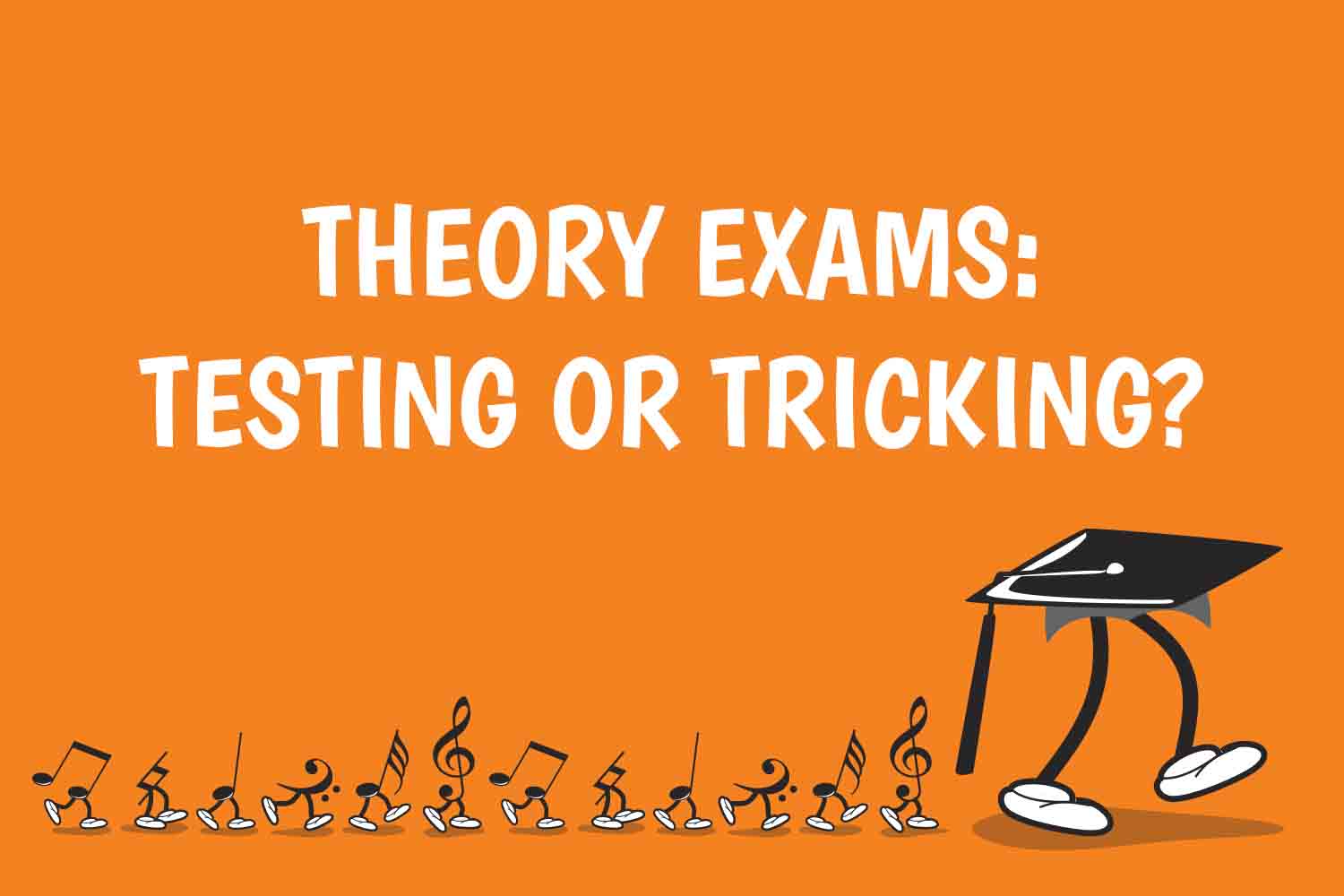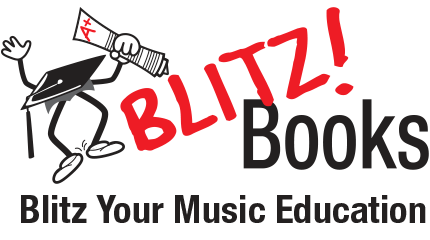Theory Exams: Testing or Tricking?

This is a guest blog written by my friend and colleague Anne Jakes. Anne has been teaching for several decades and took the time to write to me in detail about her experience of various grades in the recent AMEB Theory exams.
Hi Sam,
I am so glad you have raised the issue of ‘questionable questions’ on this year’s written papers.
The grade 1 triads question in minims was certainly most unexpected. My research of past papers (going back as far as1990) reveals note values were never stated until 2010, since when semibreves have been regularly specified. To request other note values is not outside the syllabus guidelines, as no indication in regard to note values is given, but to include this added complication on the grade 1 paper, where students are just mastering the basics, would seem rather harsh. Two of my students made a lucky guess and scored 100%; The two most deep thinking ones, did a stem going up for the 2 notes below the middle line and a stem going down for the note above the middle line; and my two most casual students assumed it was an error and still wrote semibreves! Apparently, students who chose to resolve the problem with a broken chord, were deemed to have shown a lack of understanding of the term ‘triad’. It would help teachers considerably if the AMEB included note values in the syllabus guidelines.
Grade 2:
I’m pleased to know that the semiquavers in 6/8 time were noted as being outside syllabus specifications.
That ‘segno’ sign!!! Well, my answer would probably have been:
‘The sign that a performer returns to after the instructions dal segno (meaning from the sign)’. Depending on space, I might have added ‘or the sign a performer plays to after the instructions al segno (meaning to the sign).’ But I am an adult with 76 years of knowledge stored in my brain) not an 8 – 10 year old.
Interestingly, my two most casual students wrote ‘from the sign’ and scored full marks. The deepest thinker wrote: ‘play to the word fine’, which is precisely what one does on reaching that sign. This guesstion prevented him from scoring 100%.
It would help if the AMEB included definitions of the signs set for each grade, like they do for the terminology, in their manual of syllabuses. There is a list in the AMEB’s Music practice diary, but it only includes Music Craft terms and symbols, (which sometimes differ from the theory syllabus definitions) and even there, the ‘segno’ is only included (in brackets) between the words the words Dal segno ( ) al fine.
Grade 3:
The first question was to write the scale of G minor.
I always teach natural minor scales first, then harmonic and melodic minor scales as variants requiring accidentals and that the word harmonic indicates the 7th. note should be raised. However, the question didn’t state harmonic minor. One of my students, wrote on her paper ‘assuming harmonic minor’… and drew arrows to the raised leading notes. I would like to think that students who wrote the natural minor scale with correctly marked tones were awarded full marks for this question.
Grade 4:
The general knowledge questions:
One of the extracts set for recognition was the courante from Bach’s French Suite no. 3 which is in 6/4 instead of the conventional 3/2 time. In a question where, in the absence of any speed indication, the main clues are the time signature and the anacrusis, along with some less dependable stylistic clues, it is hardly surprising that many students failed to recognise it. The syllabus states ‘to show a general knowledge of the keyboard suites of Purcell, Bach and Handel’. Familiarity with the exceptions to the norm in a total 34 suites (or 204 dances) would seem to imply detailed knowledge, rather than general.
The academic (but very accurate) wording of the following question puzzled most of my students.
‘What is the term that is used to describe the relationship between voices that are harmonically interdependent but independent in rhythm and contour?’
Out of my 9 students sitting this grade (aged 12- 16) only one was able to answer it with confidence, while five others made lucky guesses. Yet they all knew what counterpoint was.
Grade 5:
I think most teachers would be aware of the increasing amount of musical insight required for the general knowledge questions over the past 10 years, even so the detailed knowledge required to answer the scherzo question, though not outside the syllabus’s brief guidelines, was, I gather, generally unexpected:
‘Choose an independent scherzo by a great composer and briefly discuss the overall form and character of the work.’
I particularly want to bring this last one to your attention as the examiner’s comment on my students’ papers would seem to contradict what my harmony lecturer and eminent music educators like Dulcie Holland and Samantha Coates have been teaching!
Four part harmony: One of the new chords for this grade is viib, therefore my students took the opening in A major of a rising scale passage A B C# to be an invitation to use Ib viib I. However they were criticised for commencing with a first inversion chord. I can find no way of making this formula work commencing on chord I, so maybe I Vb I was expected.
Unfortunately, theory books, other than Master Your theory (grade 4) and Blitz (grade 5) appear to show no examples of openings commencing with a rising scale, though there are plenty of examples of openings beginning with scale degrees 3 2 1, where commencing in root position in this formula would be appropriate. ( i.e. I viib Ib ).
I would be interested to learn if any other teachers have made comments on this year’s written papers.
Thank you,
Anne.

Excellent analysis- thank you Anne ! For me, the papers this year seem to be modelled on very old papers – circa the 60- 70’s, where more formal (archaic) language was used – as was the use of specific examples, note values, etc – in fact that tricking mentality in examining that used to be so prevalent back then. I sometimes use these old papers as pre-exam testing. I feel the person/s setting these papers do not teach or are not up to speed with the current teaching methodologies. Papers like these do not generate goodwill or the desire for teacher or student to sit examinations in the future.
A FURTHER COMMENT ON TESTING OR TRICKING?
Anne:
It was not my intention to suggest that the issues I mentioned were deliberate attempts to trick students. I would prefer to think these questionable question, which represent a very small portion of the 2016 papers, contain inadvertent omissions or are attempts to introduce new wording of questions, which could be considered to have tweaked the syllabus’ vague guidelines. Unfortunately some of these questions failed to accurately test the knowledge of well informed, sincere students for whom quite a number, English is their second language.
A more informative syllabus would greatly assist teachers and students in preparing for these exams.